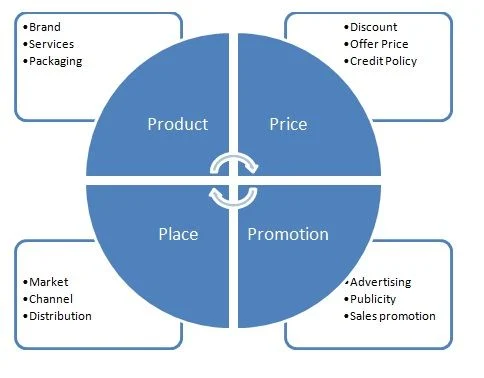In the world of marketing, understanding the Four P’s—Product, Price, Place, and Promotion—is essential for crafting effective marketing strategies. These four elements serve as a foundational framework for businesses to reach their target audience, drive sales, and create value. In this article, we will explore each of the Four P’s, their significance, and how they can be effectively utilized to build a successful marketing strategy.

What Are the Four P’s of Marketing?
1. Product
The Product refers to what a business offers to its customers. This can include goods, services, or a combination of both. Understanding the product involves knowing its features, benefits, and the problems it solves for customers. Key considerations include:
- Quality: Is the product made with high-quality materials? Does it meet customer expectations?
- Design: Is the product visually appealing and user-friendly?
- Variety: Are there different models, sizes, or flavors to cater to diverse customer preferences?
- Branding: How is the product positioned in the market, and what brand image does it convey?
A well-defined product strategy ensures that the offering meets the needs of the target market and stands out among competitors.
2. Price
The Price is the amount of money customers are willing to pay for a product or service. Pricing strategies can significantly affect sales volume and profitability. Factors to consider include:
- Cost of Production: What are the costs associated with creating the product?
- Market Demand: How much are customers willing to pay based on perceived value?
- Competitor Pricing: How do similar products in the market compare in terms of price?
- Pricing Strategy: Will the business adopt a penetration pricing strategy to enter the market or skimming pricing to maximize profits from early adopters?
Setting the right price is crucial, as it can influence customer perception and purchasing behavior.
3. Place
Place refers to the distribution channels used to deliver the product to customers. This encompasses where and how the product is sold, ensuring it is accessible to the target market. Considerations include:
- Distribution Channels: Are products sold through retail stores, online platforms, or both?
- Location: Are products available in areas where the target audience frequently shops?
- Logistics: What systems are in place for inventory management, warehousing, and transportation?
- Market Coverage: Will the business target a specific geographic area or aim for broader national or international distribution?
An effective placement strategy ensures that products are readily available to consumers when and where they want them.
4. Promotion
Promotion encompasses the various ways a business communicates with its target audience to inform, persuade, and remind them about its products or services. Key promotional strategies include:
- Advertising: Utilizing various media channels, such as television, radio, online ads, and print, to reach a broad audience.
- Public Relations: Building a positive image through press releases, events, and community engagement.
- Sales Promotion: Offering discounts, coupons, or incentives to encourage immediate purchases.
- Social Media Marketing: Engaging with customers through social media platforms to build brand loyalty and awareness.
A well-rounded promotion strategy creates visibility and interest in the product, ultimately driving sales.
Why the Four P’s Are Important
The Four P’s of marketing are crucial for several reasons:
- Holistic Approach: They provide a comprehensive framework that helps businesses align their marketing efforts with their overall business objectives. By considering each P, businesses can create a cohesive strategy that resonates with their target audience.
- Customer-Centric Focus: The Four P’s encourage businesses to think from the customer’s perspective. By understanding what customers want (Product), how much they are willing to pay (Price), where they want to shop (Place), and how they want to be informed (Promotion), companies can tailor their strategies accordingly.
- Competitive Advantage: By effectively managing the Four P’s, businesses can differentiate themselves from competitors. A unique product offering, strategic pricing, optimized distribution, and innovative promotional efforts can help a brand stand out in a crowded market.
- Measurable Outcomes: Each of the Four P’s can be measured and analyzed, allowing businesses to assess the effectiveness of their marketing strategies. This data-driven approach enables continuous improvement and adaptation to changing market conditions.
- Market Positioning: The Four P’s assist in defining a brand’s position in the market. By aligning the product, price, place, and promotion with the brand’s value proposition, businesses can effectively communicate their unique selling points to consumers.
Conclusion
In summary, the Four P’s of marketing—Product, Price, Place, and Promotion—are essential components of a successful marketing strategy. By understanding and leveraging these elements, businesses can create offerings that resonate with their target audience, drive sales, and establish a strong market presence. As markets evolve and consumer preferences shift, regularly revisiting and refining the Four P’s will ensure that a business remains competitive and relevant in its industry.




